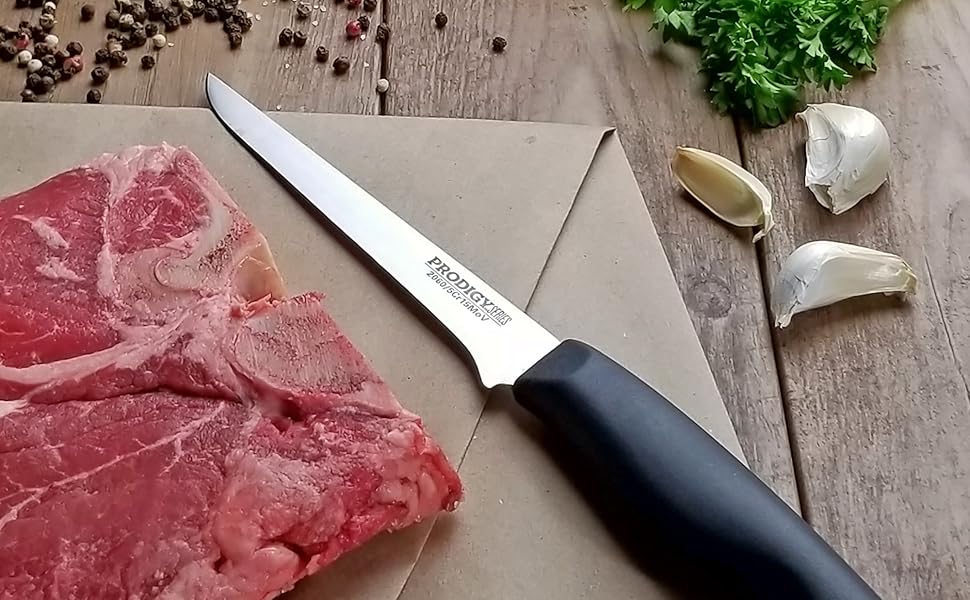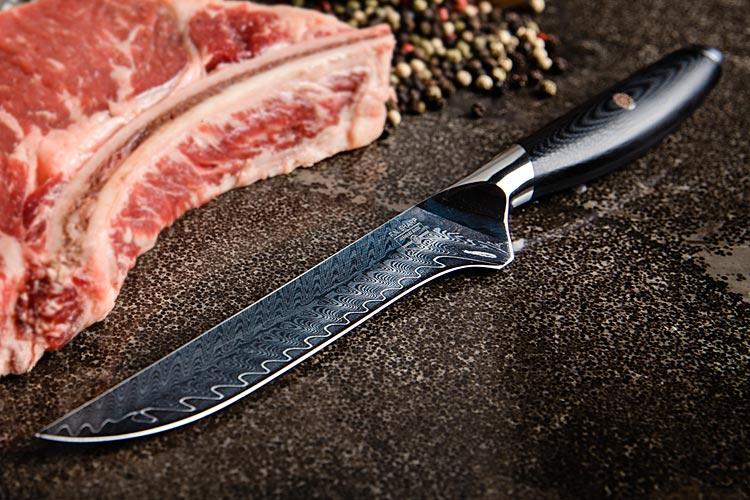The importance of a boning knife in butchery cannot be overstated. This indispensable tool plays a crucial role in the art of butchery, making it easier to separate meat from bones with precision and efficiency. Whether you’re a professional butcher or a home cook, understanding the function and value of a boning knife is essential.
Boning knives are specifically designed to handle the intricate task of deboning meat. Their sharp, narrow blades allow for precise cuts, reducing waste and enhancing the quality of the meat. With the right boning knife, you can achieve cleaner cuts, which is vital for both presentation and taste.

What is a Boning Knife?
A boning knife is a type of kitchen knife with a sharp, narrow blade that is used for removing bones from meat, poultry, and fish. Its design allows for flexibility and precision, enabling the user to make close cuts along the bone.
Features of a Boning Knife
The typical boning knife has a blade length ranging from 5 to 7 inches. It features a pointed tip and a narrow blade, which makes it ideal for piercing and cutting through tough connective tissues.
Why is the Boning Knife Important in Butchery?
The importance of a boning knife in butchery lies in its ability to make precise cuts, resulting in better meat yield and quality. Here are some reasons why it is considered essential:
Efficiency in Meat Processing
Using a boning knife allows butchers to work efficiently, saving time and effort in meat processing. The sharp blade makes it easier to follow the contours of bones, ensuring minimal meat wastage.
Enhancing Meat Presentation
A clean cut is crucial for meat presentation. A boning knife helps achieve smooth and even cuts, which are important for both aesthetic and culinary purposes.
Types of Boning Knives
There are several types of boning knives available, each designed for specific tasks:
Flexible Boning Knife
This type of boning knife is ideal for delicate tasks, such as filleting fish, where precision and gentle handling are required.
Semi-Flexible Boning Knife
Semi-flexible boning knives are versatile and can handle a variety of tasks, including poultry and meat deboning.
Stiff Boning Knife
Stiff boning knives are perfect for tougher jobs, such as deboning beef or pork. Their rigid blades provide more control and power.
Choosing the Right Boning Knife
When selecting a boning knife, consider the type of meat you’ll be working with. For instance, if you primarily debone fish, a flexible boning knife might be the best choice. For larger cuts of meat, a stiff boning knife would be more suitable. More insights can be found in this curved or straight knife guide.
How to Use a Boning Knife
Using a boning knife requires skill and practice. Here are some basic steps to follow:
Step 1: Prepare the Meat
Ensure the meat is thawed and placed on a stable surface. Remove any visible fat or skin if necessary.
Step 2: Make Initial Cuts
Use the pointed tip of the knife to make initial cuts around the bones. This will help you identify the bone structure and plan your next moves.
Step 3: Follow the Bone
Carefully follow the contours of the bones with the knife, applying gentle pressure to separate the meat. This technique is detailed in this pork ribs deboning guide.
Maintenance of Boning Knives
Proper maintenance of your boning knife is crucial for its longevity and performance. Regularly honing and sharpening the blade, along with thorough cleaning and proper storage, will keep your knife in top condition.
Common Mistakes to Avoid
Here are some common mistakes to avoid when using a boning knife:
Using the Wrong Knife
Ensure you are using the correct type of boning knife for the task at hand. Using a flexible knife for tough meats can lead to poor results.
Applying Too Much Force
Allow the sharpness of the blade to do the work. Applying excessive force can damage the meat and the knife.

FAQs
What is the primary use of a boning knife?
A boning knife is primarily used for removing bones from meat, poultry, and fish with precision.
Can a boning knife be used for other tasks?
Yes, a boning knife can also be used for trimming fat and skinning in addition to deboning.
How often should I sharpen my boning knife?
Sharpen your boning knife regularly, depending on usage. Regular honing can maintain its sharpness between sharpening sessions.
For more information about boning knives, check out this comprehensive guide.
This article contains affiliate links. We may earn a commission at no extra cost to you.


